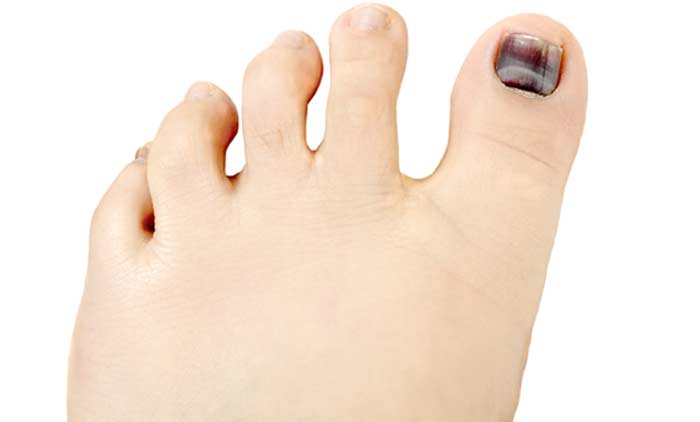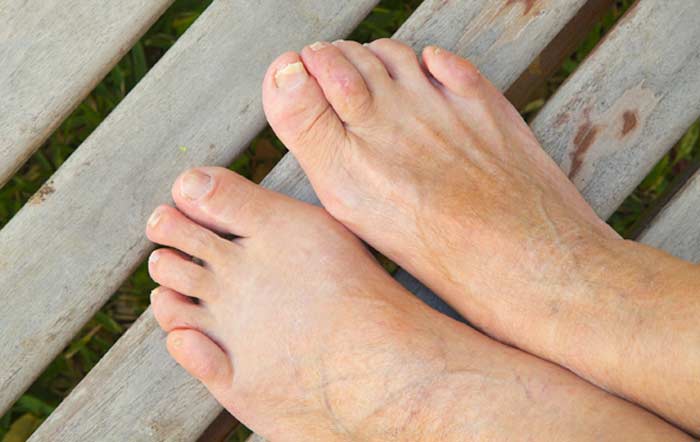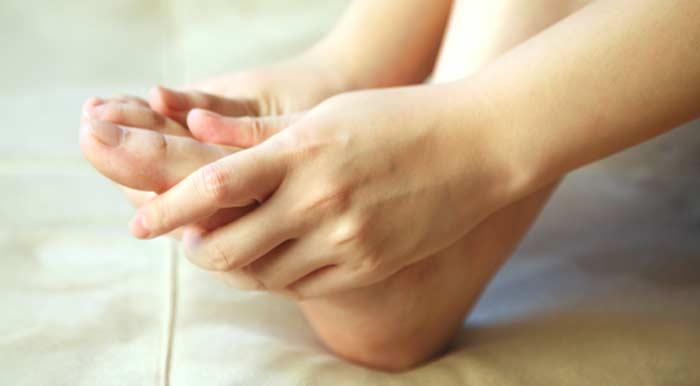
If a toe bends or curls downward on a permanent basis, it’s a condition called hammertoe.
While it’s the second or third toe that’s often affected, this deformity can develop around the middle joint of any toe. Abnormal toe joint bending can become a problem if pressure is placed on other toes when wearing footwear.
While the condition is sometimes present at birth, it’s more likely to progressively develop and worsen over time. Treatment options vary and will depend on the severity of the deformity.
What Causes Hammertoes?
Hammertoe is sometimes caused by a traumatic injury to a toe. Other times, an unusually high arch contributes to toe joint damage. Underlying conditions that affect joints such as arthritis can also cause toe joints to progressively become deformed. Hammertoe may also develop because of ligaments or tendons of the foot that are tight or tense. Other toe-related conditions like bunions sometimes place pressure on an adjacent toe that causes a toe joint to bend.


What Are Signs and Symptoms?
Aside from a visible deformity, one of the early signs of hammertoe is pain that’s felt when walking with shoes on. Pain may also be experienced when moving or stretching the affected toe. Symptoms often associated with hammertoe include:
- A toe that’s visibly bent downward
- An affected toe that cannot be flexed or wiggled
- Difficult walking or maintaining proper balance
How Is Hammertoe Diagnosed and Treated?
Hammertoe is usually initially diagnosed with a visual examination of the affected toe and foot. X-rays and other image tests may be performed to determine the extent of the deformity and whether or not nearby muscles or ligaments have also been affected by the abnormality. If an underlying condition is suspected as a contributing factor, additional testing may be done.
Avoiding treatment altogether may cause damage to nearby toes or contribute to the development of other foot or toe problems. If hammertoe developed because of improperly fitting footwear, it may be possible to correct the condition by choosing shoes that provide sufficient support. Toe pads, insoles, or custom orthotics may be recommended if hammertoe is caused by high arches. If a bunion caused an adjacent toe to become deformed and over-the-counter treatments aren’t effective, surgical removal of the bunion (bunionectomy) may be necessary.
With mild hammertoe, it’s sometimes possible to gently stretch and straighten the affected joint. Over-the-counter creams and cushions can help with blisters that sometimes form from the friction caused by hammertoe. If the deformity is severe and other treatment efforts aren’t effective, surgery may be recommended. Usually performed as an outpatient procedure, surgery for hammertoe typically involves:
- Repositioning the affected toe
- Removing damaged parts of the deformed bone
- Realigning joints and tendons
Hammertoes are also sometimes the result of spinal cord or peripheral nerve damage and other circumstances that cannot be prevented. Yet there are some instances when this deformity might be preventable. For example, avoiding tight or pointy-toed shoes may minimize pressure on toes enough to maintain joint flexibility. Also, the corns or calluses that sometimes form on top of a hammertoe may be prevented by using a pumice stone following a warm bath.
